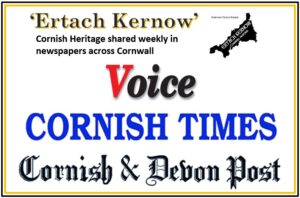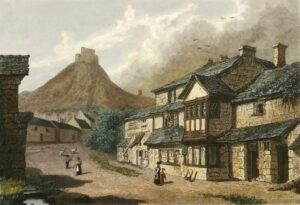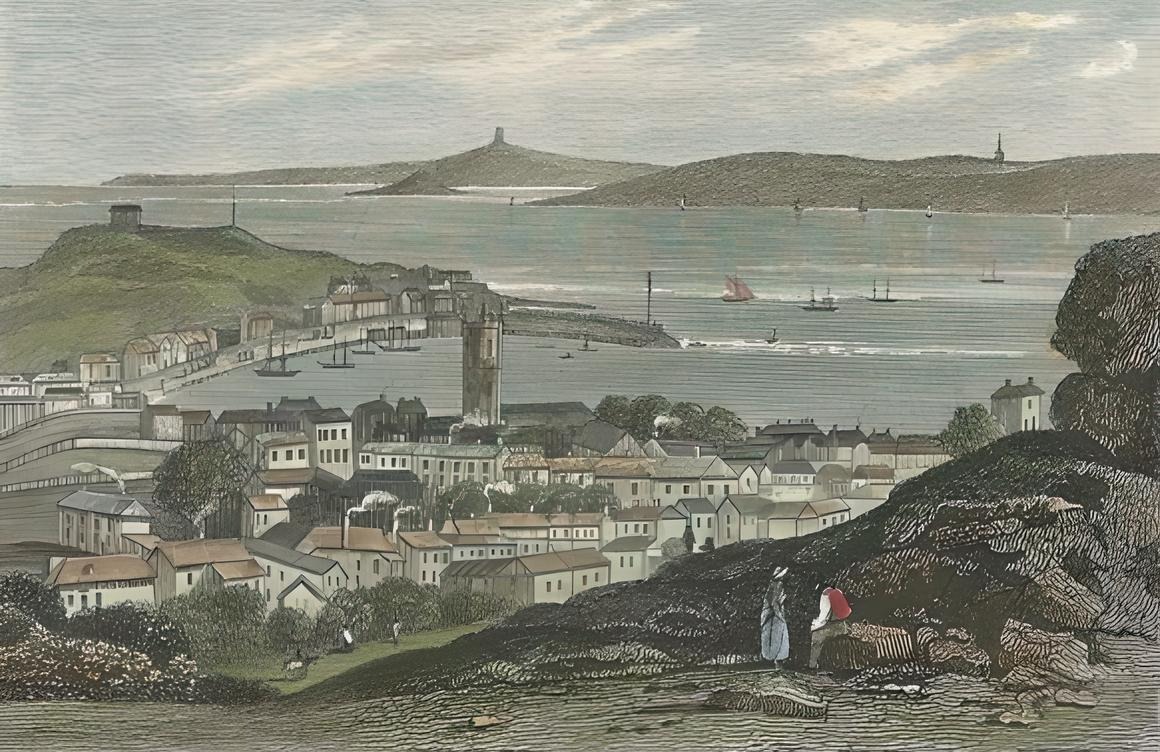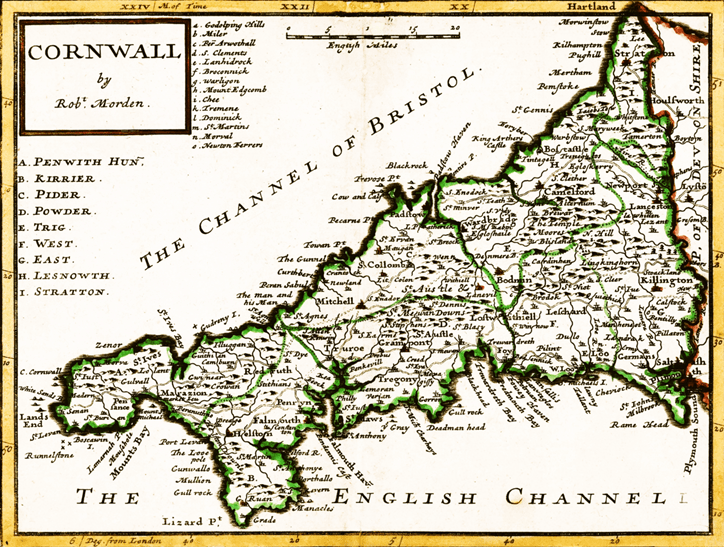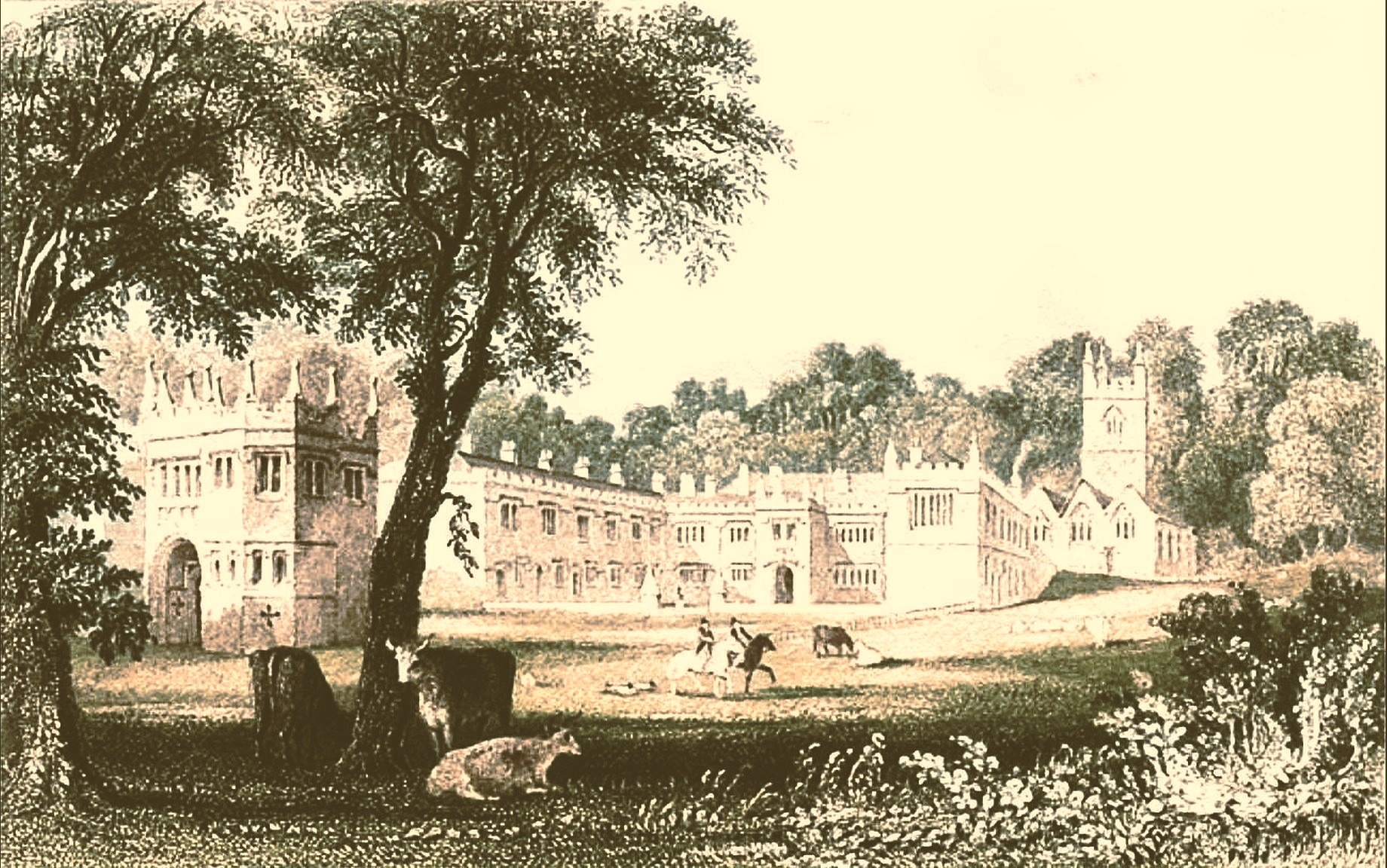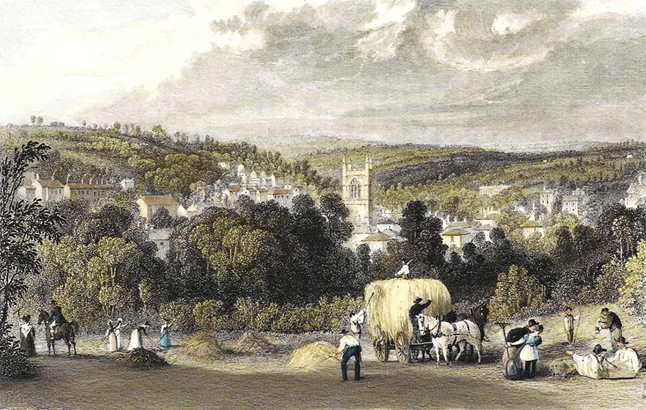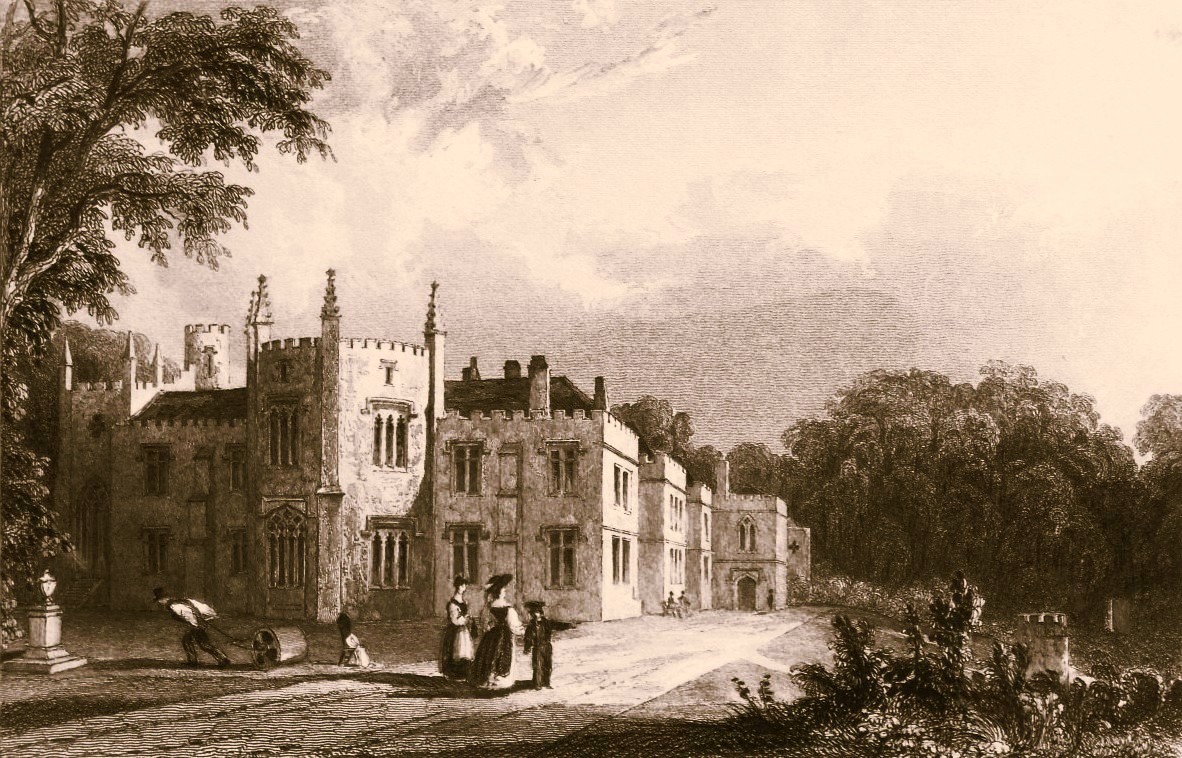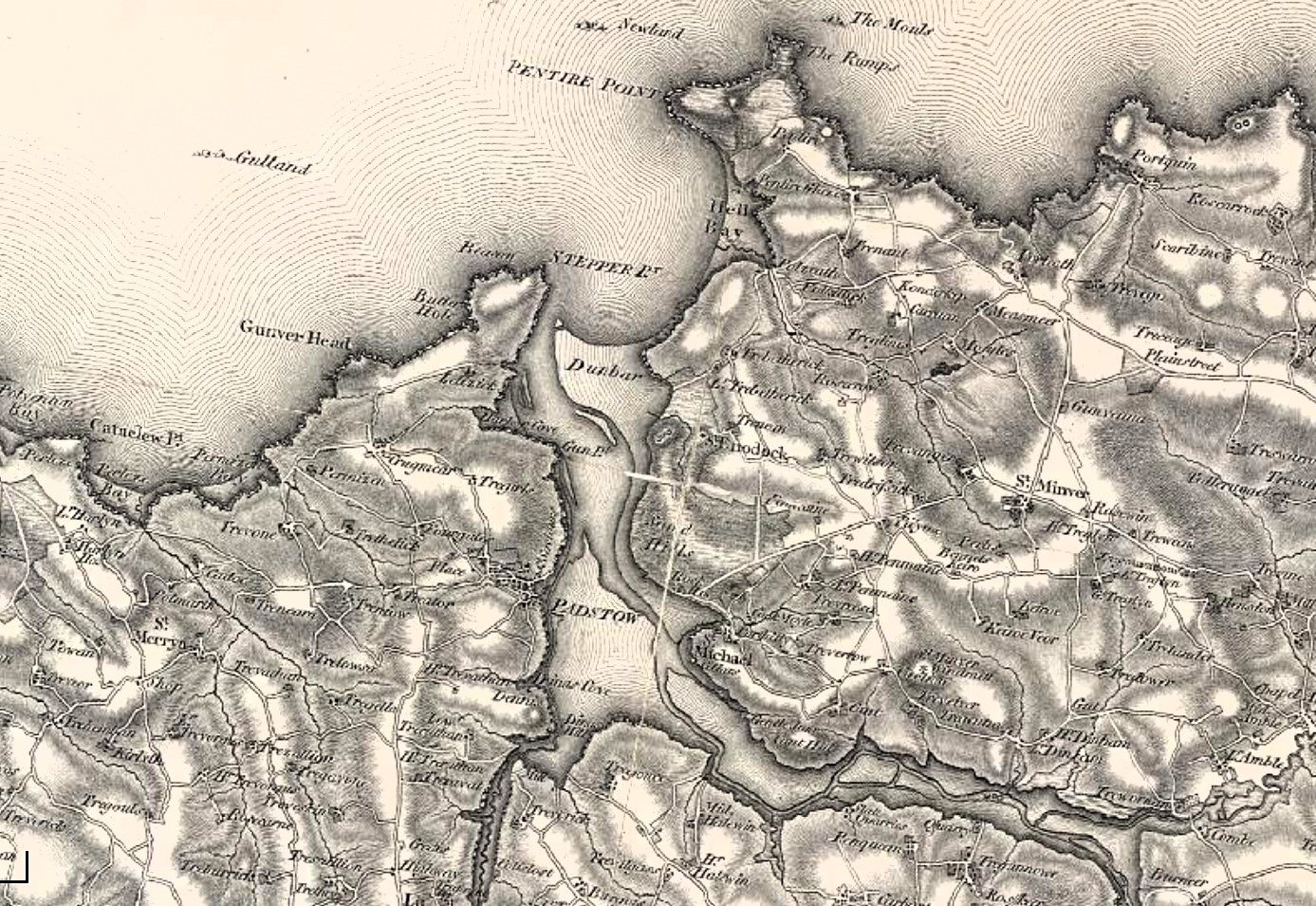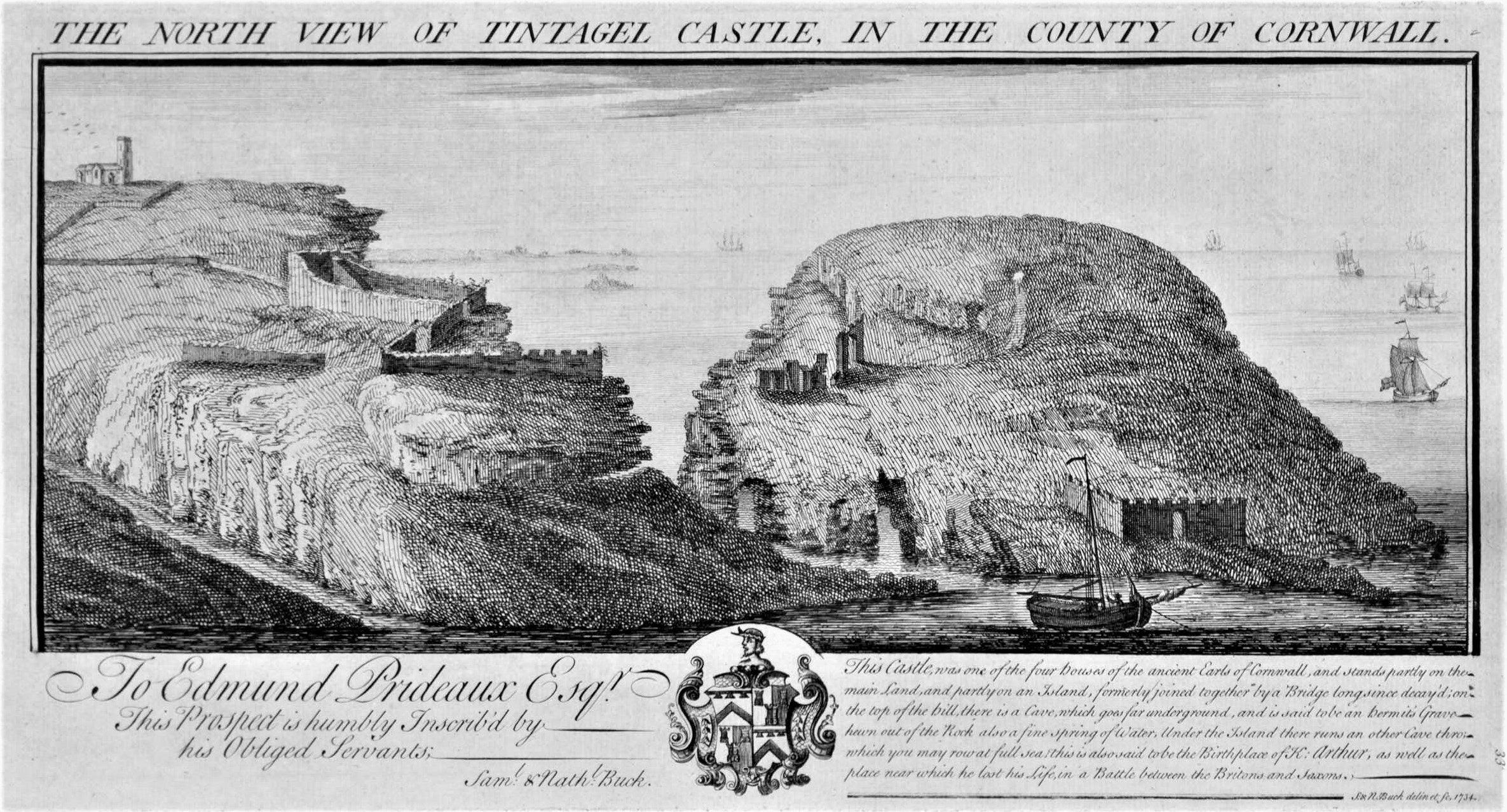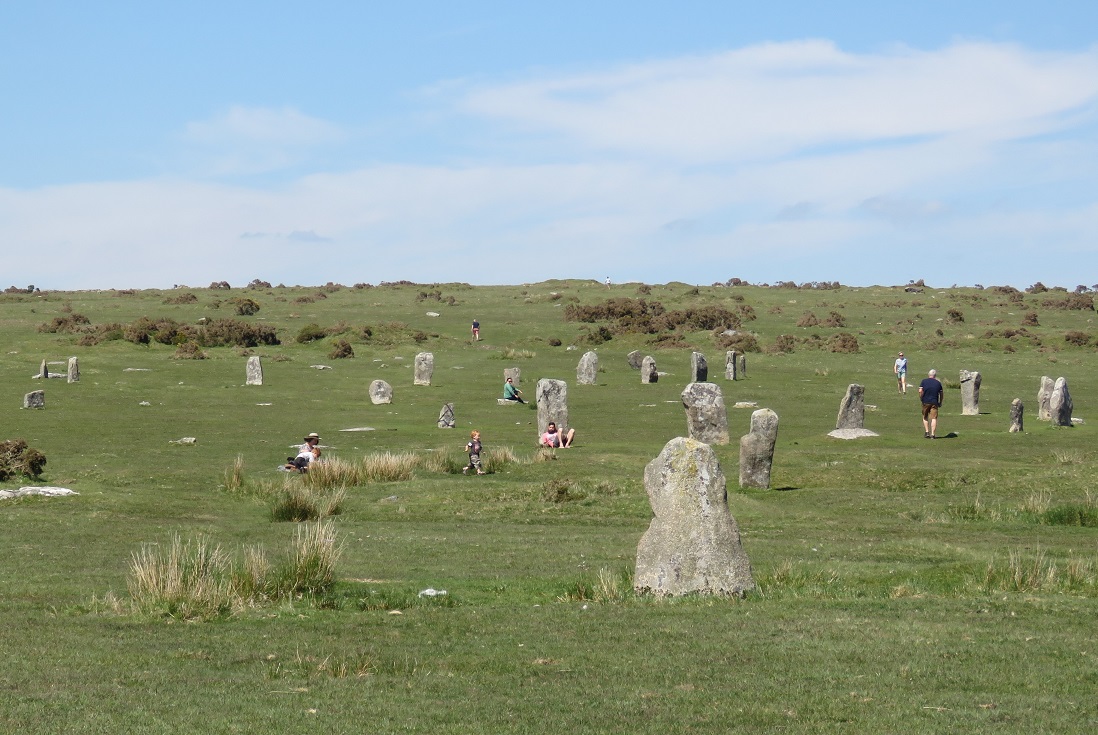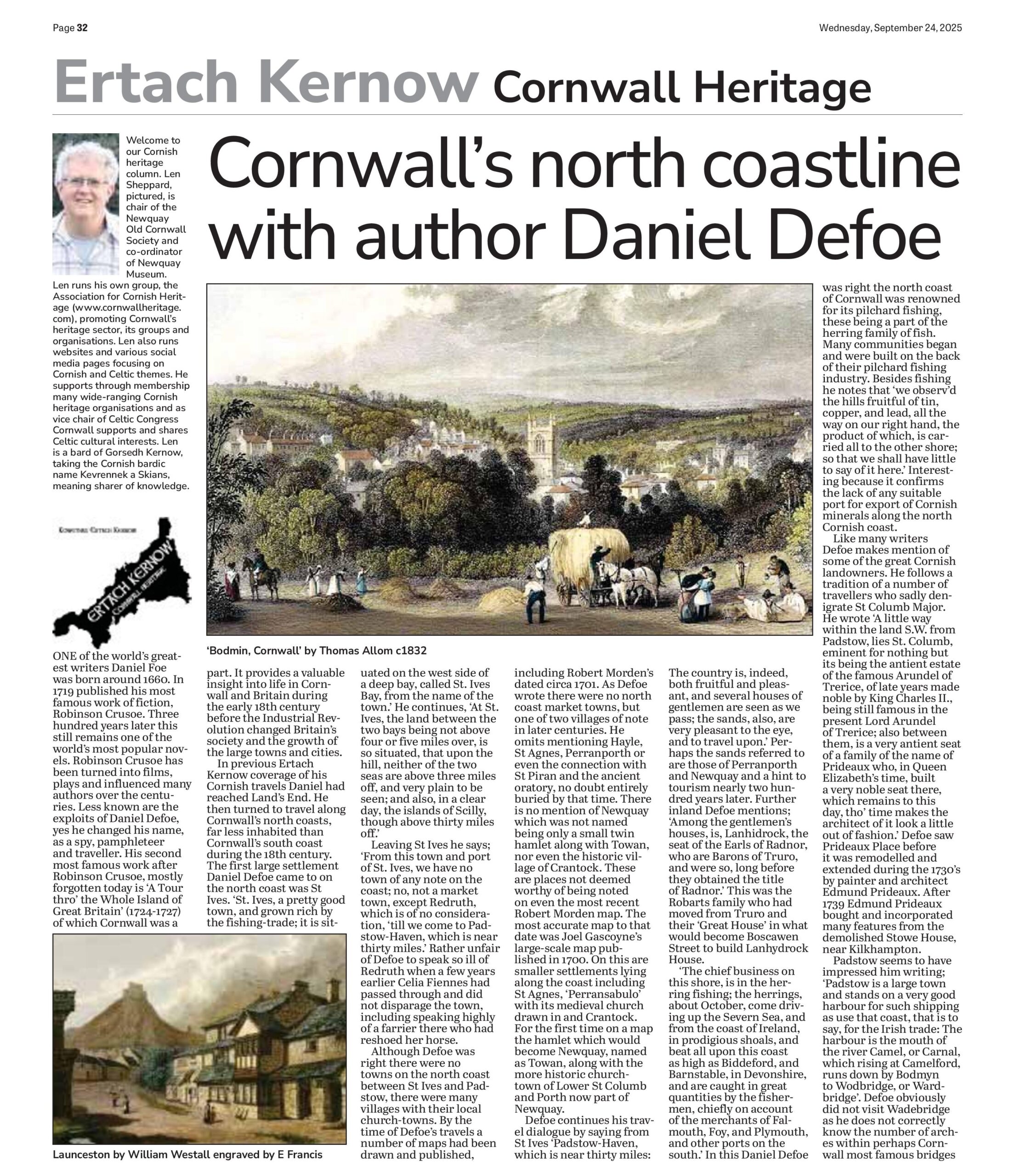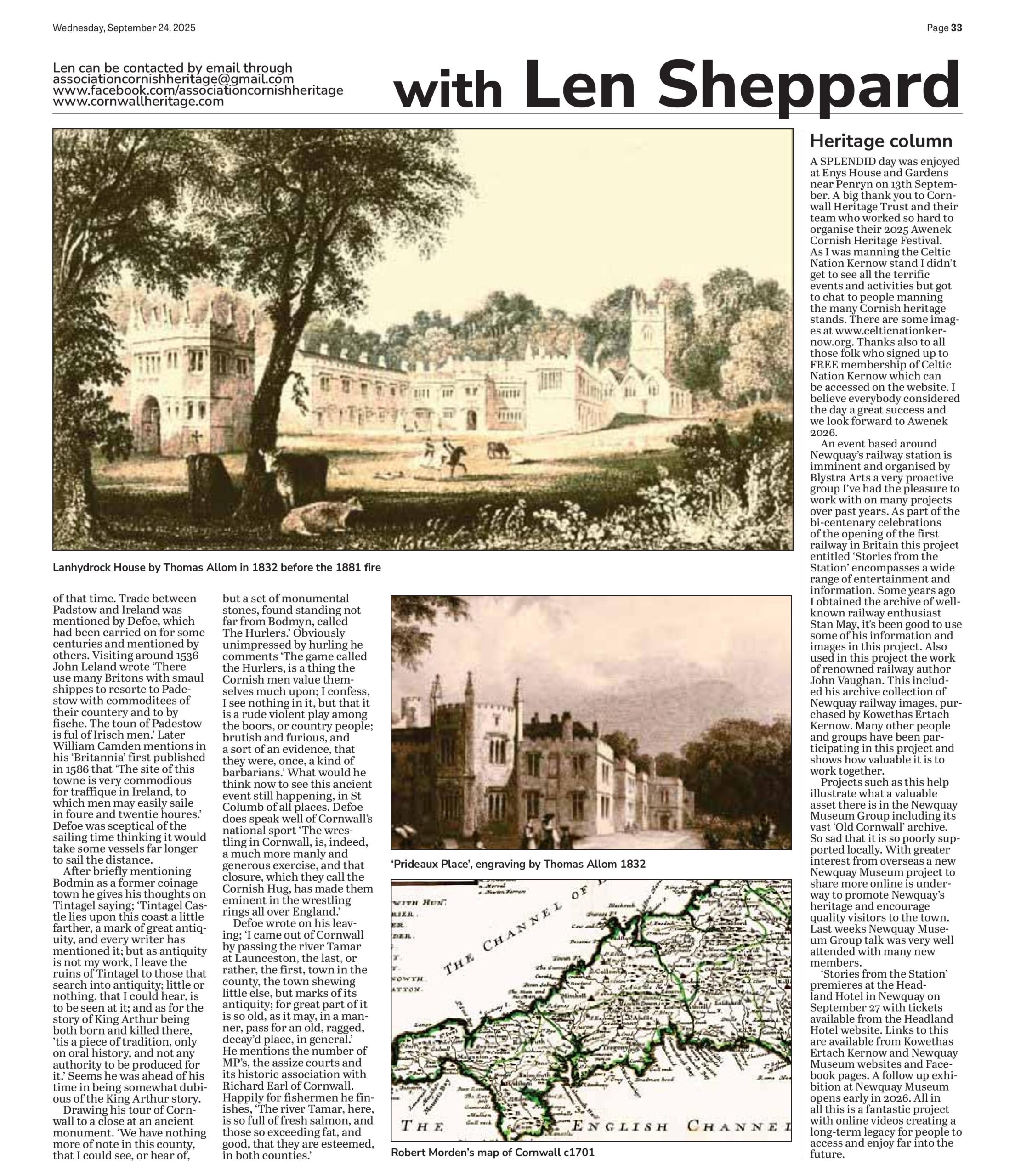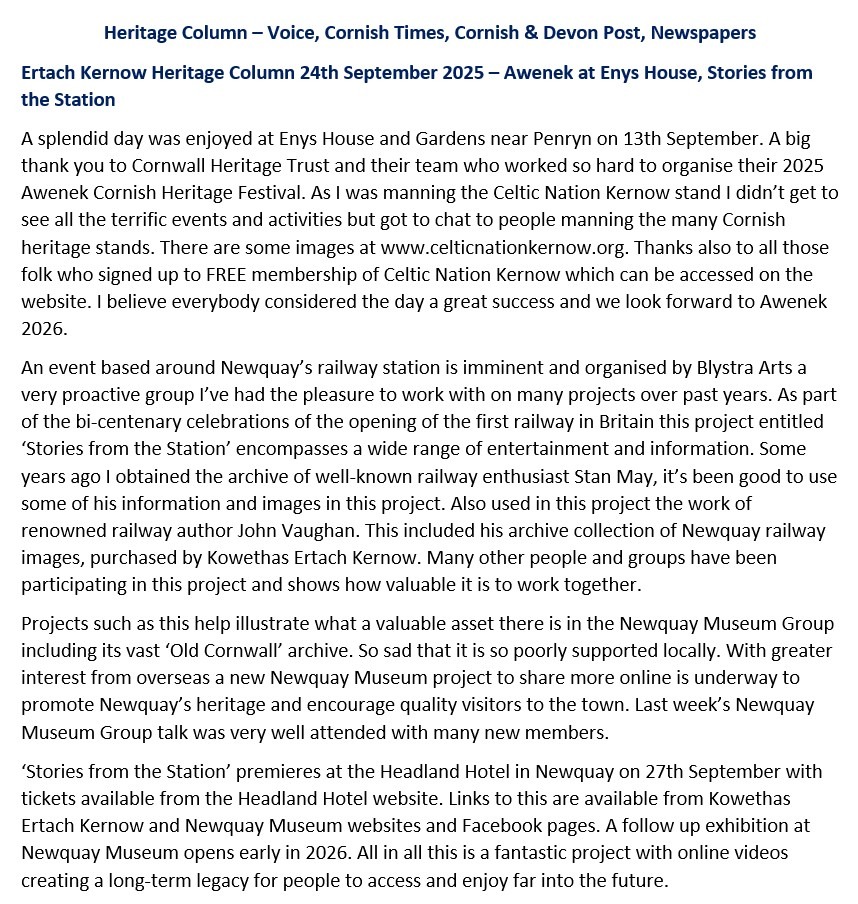Ertach Kernow - Cornwall’s north coastline with author Daniel Defoe
One of the world’s greatest writers Daniel Foe was born around 1660. In 1719 published his most famous work of fiction, Robinson Crusoe. Three hundred years later this still remains one of the world’s most popular novels. Robinson Crusoe has been turned into films, plays and influenced many authors over the centuries. Less known are the exploits of Daniel Defoe, yes he changed his name, as a spy, pamphleteer and traveller. His second most famous work after Robinson Crusoe, mostly forgotten today is ‘A Tour thro' the Whole Island of Great Britain’ (1724-1727) of which Cornwall was a part. It provides a valuable insight into life in Cornwall and Britain during the early 18th century before the Industrial Revolution changed Britain’s society and the growth of the large towns and cities.
In previous Ertach Kernow coverage of his Cornish travels Daniel had reached Land’s End. He then turned to travel along Cornwall’s north coasts, far less inhabited than Cornwall’s south coast during the 18th century. The first large settlement Daniel Defoe came to on the north coast was St Ives. ‘St. Ives, a pretty good town, and grown rich by the fishing-trade; it is situated on the west side of a deep bay, called St. Ives Bay, from the name of the town.’ He continues, ‘At St. Ives, the land between the two bays being not above four or five miles over, is so situated, that upon the hill, neither of the two seas are above three miles off, and very plain to be seen; and also, in a clear day, the islands of Scilly, though above thirty miles off.’
Leaving St Ives he says; ‘From this town and port of St. Ives, we have no town of any note on the coast; no, not a market town, except Redruth, which is of no consideration, ‘till we come to Padstow-Haven, which is near thirty miles.’ Rather unfair of Defoe to speak so ill of Redruth when a few years earlier Celia Fiennes had passed through and did not disparage the town, including speaking highly of a farrier there who had reshoed her horse.
Thank you for reading the online version of the Ertach Kernow weekly articles. These take some 12 hours each week to research, write and then upload to the website, and is unpaid. It would be most appreciated if you would take just a couple of minutes to complete the online survey marking five years of writing these weekly articles. Many thanks.
Click the link for survey: Ertach Kernow fifth anniversary survey link
As always click the images for larger view
Although Defoe was right there were no towns on the north coast between St Ives and Padstow, there were many villages with their local church-towns. By the time of Defoe’s travels a number of maps had been drawn and published, including Robert Morden’s dated circa 1701. As Defoe wrote there were no north coast market towns, but one of two villages of note in later centuries. He omits mentioning Hayle, St Agnes, Perranporth or even the connection with St Piran and the ancient oratory, no doubt entirely buried by that time. There is no mention of Newquay which was not named being only a small twin hamlet along with Towan, nor even the historic village of Crantock. These are places not deemed worthy of being noted on even the most recent Robert Morden map. The most accurate map to that date was Joel Gascoyne’s large-scale map published in 1700. On this are smaller settlements lying along the coast including St Agnes, ‘Perransabulo’ with its medieval church drawn in and Crantock. For the first time on a map the hamlet which would become Newquay, named as Towan, along with the more historic churchtown of Lower St Columb and Porth now part of Newquay.
Defoe continues his travel dialogue by saying from St Ives ‘Padstow-Haven, which is near thirty miles: The country is, indeed, both fruitful and pleasant, and several houses of gentlemen are seen as we pass; the sands, also, are very pleasant to the eye, and to travel upon.’ Perhaps the sands referred to are those of Perranporth and Newquay and a hint to tourism nearly two hundred years later. Further inland Defoe mentions; ‘Among the gentlemen’s houses, is, Lanhidrock, the seat of the Earls of Radnor, who are Barons of Truro, and were so, long before they obtained the title of Radnor.’ This was the Robarts family who had moved from Truro and their ‘Great House’ in what would become Boscawen Street to build Lanhydrock House.
‘The chief business on this shore, is in the herring fishing; the herrings, about October, come driving up the Severn Sea, and from the coast of Ireland, in prodigious shoals, and beat all upon this coast as high as Biddeford, and Barnstable, in Devonshire, and are caught in great quantities by the fishermen, chiefly on account of the merchants of Falmouth, Foy, and Plymouth, and other ports on the south.’ In this Daniel Defoe was right the north coast of Cornwall was renowned for its pilchard fishing, these being a part of the herring family of fish. Many communities began and were built on the back of their pilchard fishing industry. Besides fishing he notes that ‘we observ’d the hills fruitful of tin, copper, and lead, all the way on our right hand, the product of which, is carried all to the other shore; so that we shall have little to say of it here.’ Interesting because it confirms the lack of any suitable port for export of Cornish minerals along the north Cornish coast.
Like many writers Defoe makes mention of some of the great Cornish landowners. He follows a tradition of a number of travellers who sadly denigrate St Columb Major. He wrote ‘A little way within the land S.W. from Padstow, lies St. Columb, eminent for nothing but its being the antient estate of the famous Arundel of Trerice, of late years made noble by King Charles II., being still famous in the present Lord Arundel of Trerice; also between them, is a very antient seat of a family of the name of Prideaux who, in Queen Elizabeth’s time, built a very noble seat there, which remains to this day, tho’ time makes the architect of it look a little out of fashion.’ Defoe saw Prideaux Place before it was remodelled and extended during the 1730’s by painter and architect Edmund Prideaux. After 1739 Edmund Prideaux bought and incorporated many features from the demolished Stowe House, near Kilkhampton.
Padstow seems to have impressed him writing; ‘Padstow is a large town and stands on a very good harbour for such shipping as use that coast, that is to say, for the Irish trade: The harbour is the mouth of the river Camel, or Carnal, which rising at Camelford, runs down by Bodmyn to Wodbridge, or Wardbridge’. Defoe obviously did not visit Wadebridge as he does not correctly know the number of arches within perhaps Cornwall most famous bridges of that time. Trade between Padstow and Ireland was mentioned by Defoe, which had been carried on for some centuries and mentioned by others. Visiting around 1536 John Leland wrote ‘There use many Britons with smaul shippes to resorte to Padestow with commoditees of their countery and to by fische. The toun of Padestow is ful of Irisch men.’ Later William Camden mentions in his ‘Britannia’ first published in 1586 that ‘The site of this towne is very commodious for traffique in Ireland, to which men may easily saile in foure and twentie houres.’ Defoe was sceptical of the sailing time thinking it would take some vessels far longer to sail the distance.
After briefly mentioning Bodmin as a former coinage town he gives his thoughts on Tintagel saying; ‘Tintagel Castle lies upon this coast a little farther, a mark of great antiquity, and every writer has mentioned it; but as antiquity is not my work, I leave the ruins of Tintagel to those that search into antiquity; little or nothing, that I could hear, is to be seen at it; and as for the story of King Arthur being both born and killed there, ’tis a piece of tradition, only on oral history, and not any authority to be produced for it.’ Seems he was ahead of his time in being somewhat dubious of the King Arthur story.
Drawing his tour of Cornwall to a close at an ancient monument. ‘We have nothing more of note in this county, that I could see, or hear of, but a set of monumental stones, found standing not far from Bodmyn, called The Hurlers.’ Obviously unimpressed by hurling he comments ‘The game called the Hurlers, is a thing the Cornish men value themselves much upon; I confess, I see nothing in it, but that it is a rude violent play among the boors, or country people; brutish and furious, and a sort of an evidence, that they were, once, a kind of barbarians.’ What would he think now to see this ancient event still happening, in St Columb of all places. Defoe does speak well of Cornwall’s national sport ‘The wrestling in Cornwall, is, indeed, a much more manly and generous exercise, and that closure, which they call the Cornish Hug, has made them eminent in the wrestling rings all over England.’
Defoe wrote on his leaving; ‘I came out of Cornwall by passing the river Tamar at Launceston, the last, or rather, the first, town in the county, the town shewing little else, but marks of its antiquity; for great part of it is so old, as it may, in a manner, pass for an old, ragged, decay’d place, in general.’ He mentions the number of MP’s, the assize courts and its historic association with Richard Earl of Cornwall. Happily for fishermen he finishes, ‘The river Tamar, here, is so full of fresh salmon, and those so exceeding fat, and good, that they are esteemed, in both counties.’
